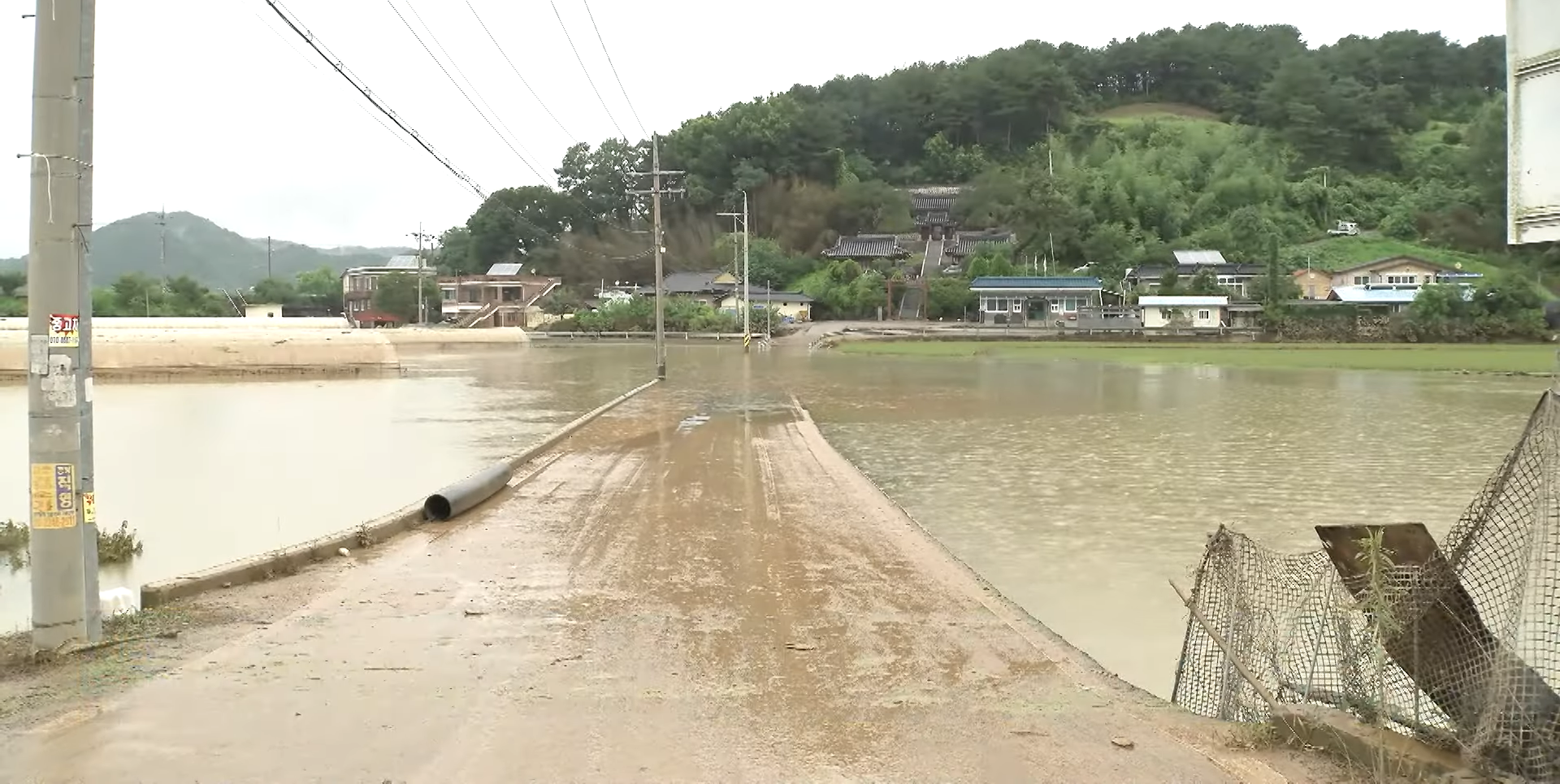

By Asmita - Jul 20, 2025
Relentless rains in South Korea over five days have caused devastating floods and landslides, resulting in at least 14 deaths and 12 missing persons. Southern regions were hardest hit, with communities like Sancheong and Gapyeong facing significant losses. Thousands have been displaced, and nearly 2,000 public facilities have been damaged. Search and rescue efforts are ongoing, as President Lee Jae Myung calls for prompt assessment and relief measures for the affected regions.

South Korean flooding picture via Wikimedia
LATEST
Relentless torrential rains hammered South Korea for five consecutive days, triggering devastating floods and landslides that have killed at least 14 people and left 12 others missing, according to the latest reports from government officials. The heaviest downpours struck the country's southern regions, dumping between 600 and 800 millimeters of rain since Wednesday, overwhelming rivers, submerging vehicles, and forcing thousands from their homes. In response to the disaster, the government issued evacuation orders in the hardest-hit areas and mobilized search and rescue teams to comb debris and flooded zones for survivors.
Among the fatalities, the southern town of Sancheong in South Gyeongsang Province experienced the greatest loss, with eight people confirmed dead after landslides swept through homes and villages. Six people remain missing in Sancheong, as search efforts continued through the weekend. In Gapyeong, a resort town northeast of Seoul, heavy rain caused the collapse of houses and unleashed fast-moving streams, leading to two deaths and several more missing persons. Incidents were also reported in Osan, where a retaining wall gave way and buried a vehicle, and in Seosan and Dangjin, both located in South Chungcheong Province.
The scale of destruction stretched far beyond these communities. Across South Korea, nearly 2,000 public facilities have been damaged or destroyed, including washed-out roads, collapsed bridges, and submerged greenhouses. According to the Interior and Safety Ministry, more than 3,800 people have been evacuated from their homes, with many seeking shelter in temporary facilities such as community centers and gymnasiums. Flight cancellations and travel chaos added to the disruption, as transportation routes in several provinces were rendered impassable by landslides or standing floodwaters.
President Lee Jae Myung instructed authorities to promptly assess the damage and designate the worst-hit regions as special disaster zones to expedite relief and recovery measures. Emergency responders, soldiers, and volunteers continue to search for the missing, maneuvering through thick mud, debris, and precarious terrain. In Sancheong, local officials had issued a rare countywide evacuation order as rivers breached their banks, and in Gapyeong, rescue operations focused on homes and guesthouses partially or completely buried by soil and rubble. The heavy rainfall abated Sunday morning, allowing officials to lift alerts nationwide, but the aftermath will leave lasting scars on communities throughout South Korea.